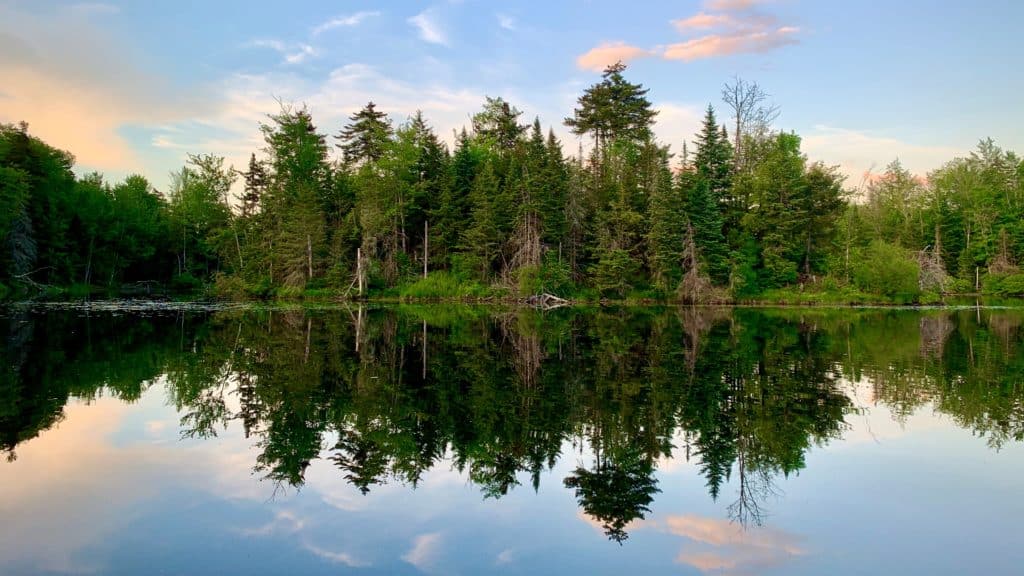How our disregard for nature is making us sick
By Tom Rogers
On a warm summer evening this past July, I arrived home feeling unusually worn down. I’d been exhausted all day, and I was soon overcome with waves of crippling chills, my fever spiked, and I spent the night sweating through my sheets.
I drove to the clinic the next morning thinking I would be added to the growing number of Covid-19 cases in the state. Instead, the doctor examined me and quickly came to another conclusion. “It’s Lyme disease,” she said with confidence, “or a similar tick-borne illness.”
I was not alone in contracting Lyme disease this summer. Most years, Vermont is either first or second in the nation in per capita cases of Lyme, and prior to the pandemic, Lyme was the fastest growing infectious disease outbreak in the country.
This growth in Lyme and other tick-borne illnesses is a result of development patterns that have created the ideal conditions for ticks to thrive. As sprawl has taken over the eastern United States in recent decades, and native plants have been crowded out by tangled mats of invasive weeds like barberry and honeysuckle, tick numbers have exploded. Worse still, climate change is pushing black-legged ticks northward, with projections for their range to double in the next fifty years. Ticks are increasingly spreading nasty diseases, with symptoms ranging from the life-threatening (babesiosis) to the weird (alpha-gal syndrome causes an allergy to red meat).
Forest fragmentation, and the resulting wildlife that are pushed into recently deforested areas, make it easier for many infectious diseases to spread to humans. In the tropics, malaria spreads more easily in recently deforested areas where mosquitoes thrive. In the U.S., our need for vast, green lawns (the single largest irrigated crop in the country, covering an area equivalent to New York state) has caused an increase in robins, a preferred host of West Nile virus. Exploitation and unregulated markets of exotic wildlife have been breeding grounds for a host of new diseases to be spread to people, from Ebola to bird flu to SARS.
But never has our neglect of nature been more apparent than the Covid-19 outbreak that has killed more than 1.5 million people worldwide and caused life to come to a standstill. The novel coronavirus is believed to have originated in horseshoe bats and spread to humans through wildlife trafficking – specifically, the illegal trade of pangolins, a scaly anteater that is among the most heavily trafficked wildlife species on earth.
When you add in the effects of air and water pollution on human health, the true cost of an unhealthy natural world becomes even more apparent. The U.S. is seventh in the world for pollution-related deaths, with poor air and water quality causing nearly 200,000 Americans to die prematurely each year, in addition to promoting sublethal diseases like asthma, cancer, heart disease, and birth defects in children.
Protecting nature is clearly the best form of preventive medicine.
A landmark 2012 study in the journal Science estimated it would take an investment of $80 billion to protect all nature worldwide between 2012 and 2020. By comparison, the U.S. spends $3.6 trillion annually on healthcare, most of which is spent to address health issues once they have arisen. We didn’t make that relatively small investment to protect nature in 2012, and now our carelessness has resulted in a pandemic that is projected to cost the U.S. economy $16 trillion. It is clear we need to make a large financial investment in nature, but that investment will pay exponential dividends in human health, and the health of our communities and our economy.
Beyond a financial investment, we need a society-wide effort to keep nature healthy. We need landscapers who plant with native, wildlife-friendly plants; voters who demand their elected officials tackle climate change and address the loss of biodiversity; landowners who keep their forests and waters healthy; volunteers who plant trees or pull invasive weeds; planners who slow forest fragmentation in their communities; and a generation of professional conservationists working to tackle our most pressing issues.
Vermont should seize this opportunity to once again be a model for the nation in this time of crisis by prioritizing innovation and initiatives that support both our local economy and a healthy environment. The Nature Conservancy has partnered with land trusts, conservation organizations, and watershed groups to craft a Covid recovery vision that seeks to create a future where both people and nature thrive.
If our world continues to become hotter and more crowded, and global biodiversity continues to decline, we can expect pandemics like the one we are currently in to become more frequent. Much like climate change has caused what was once a hundred-year storm to hit every few years, our disregard for nature will cause the hundred-year pandemic to similarly increase in frequency. We must care for the natural world as we care for our own bodies, or we will be doomed to suffer the illnesses we inflict on nature.
Tom Rogers is a resident of Stowe and associate director of philanthropy for The Nature Conservancy in Vermont.





